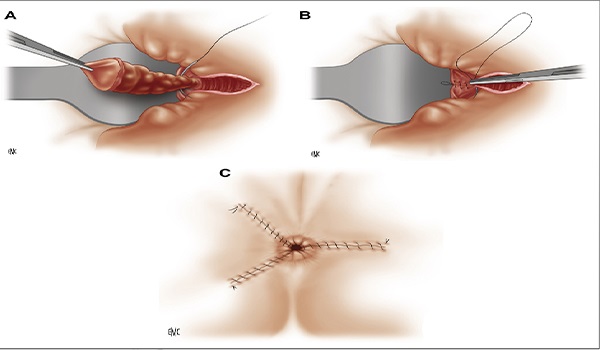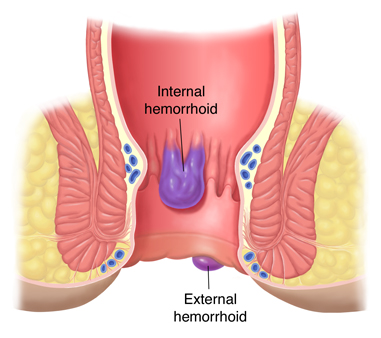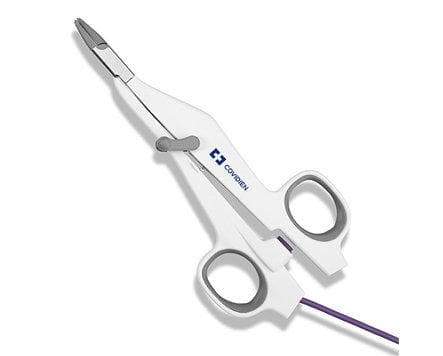Hemorrhoids are swollen veins in the anal canal. This common problem can be painful, but it is usually not serious. Veins can swell inside the anal canal to form internal hemorrhoids. Or they can swell near the opening of the anus to form external hemorrhoids. You can have both types at the same time. The symptoms and treatment depend on which type you have.
What causes hemorrhoids?
Too much pressure on the veins in the pelvic and rectal area causes hemorrhoids. Normally, tissue inside the anus fills with blood to help control bowel movements. If you strain to move stool, the increased pressure causes the veins in this tissue to swell and stretch. This can cause hemorrhoids. Diarrhea or constipation also may lead to straining and can increase pressure on veins in the anal canal.
Pregnant women can get hemorrhoids during pregnancy. This is because of increased pressure on the blood vessels in the pelvic area. Straining to push the baby out during labor can make hemorrhoids worse.
Hemorrhoid Symptoms
The most common symptoms of both internal and external hemorrhoids include:
- Bleeding during bowel movements. You might see streaks of bright red blood on toilet paper after you strain to have a bowel movement.
- Itching.
- Rectal pain. It may be painful to clean the anal area.
Internal hemorrhoids
With internal hemorrhoids, you may see bright red streaks of blood on toilet paper or bright red blood in the toilet bowl after you have a normal bowel movement. You may see blood on the surface of the stool.
Internal hemorrhoids often are small, swollen veins in the wall of the anal canal. But they can be large, sagging veins that bulge out of the anus all the time. They can be painful if they bulge out and are squeezed by the anal muscles. They may be very painful if the blood supply to the hemorrhoid is cut off. If hemorrhoids bulge out, you also may see mucus on the toilet paper or stool.
External hemorrhoids
External hemorrhoids can bleed, and then the blood pools, causing a hard painful lump. This is called a thrombosed, or clotted, hemorrhoid.
How are hemorrhoids treated?
 For most external hemorrhoids, home treatment is all you need. This includes slowly adding to your meals, drinking more water, and using over-the-counter ointments for a limited time to stop itching. You also may use stool softeners. The same home treatment can be used for most internal hemorrhoids.
For most external hemorrhoids, home treatment is all you need. This includes slowly adding to your meals, drinking more water, and using over-the-counter ointments for a limited time to stop itching. You also may use stool softeners. The same home treatment can be used for most internal hemorrhoids.
Surgery to remove hemorrhoids may be done if other treatments don’t work.


